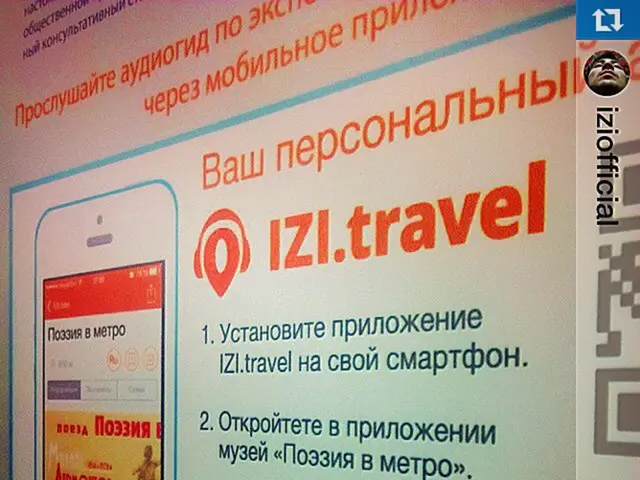Bachelor's degree students shell out an average of 1.6 million rubles during their four-year tenure.
In a joint analysis, Central University and T-Data, a data analytics arm of T-Bank, delved into the spending patterns, real-world costs, and habits of students hailing from the top 20 universities in the bustling cities of Moscow and St. Petersburg. The comprehensive study, now accessible on our Education section, utilized anonymized financial transaction data from students aged 17-23 between 2019 and 2024, covering both offline and online purchases.
Over the 2023/24 academic year, the typical student doled out approximately 33,000 rubles every month, marking a 18% surge in spending compared to the 2021/22 academic year. Four years of undergraduate studies would set a student back roughly 1.6 million rubles, and two years of postgraduate studies, around 1.1 million rubles.
Variations in Spending by University
Students from MGIMO took the cake with monthly spending reaching an impressive 49,900 rubles. In a close second were students from MFYuA with 43,100 rubles, followed closely by HSE students at 42,700 rubles. Students from technical and medical universities such as MIPT, MIEM, and RNRMU maintained lower-than-average budgets, with MIPT students spending 26,600 rubles per month. The highest monthly outlay, a whopping 55,000 rubles, was clocked by MGIMO students in December 2024, while MIPT students spent half of that during the same period.
Food and Dining Preferences
Over a third of a student's budget goes towards sustenance. During the fall and spring seasons, students favor dining out over food shopping (30% vs. 27%). The Moscow State Law University named after O.E. Kutafin emerged as leaders in dining-out expenses, with cafes and restaurants gobbling up 21% of the budget.
Shopping and Online Purchases
Students may allocate up to 10% of their budget on marketplaces and up to 7% on online and offline clothing and footwear stores. Future educators from Moscow Pedagogical State University (MPGU) lead the way with online shopping, making up 11% of their expenditure.
MGIMO students, on the other hand, spend the least on supermarkets and marketplaces, allocating 11% and 4% of their budget to these categories, respectively.
Transportation Expenses
Transportation costs figure prominently among student expenses. MGIMO students tend to opt for taxis, representing about 7% of overall expenses, while students at St. Petersburg State University take the highest share of public transport expenses, of up to 5%.
Age, Course, and Seasonal Factors
Initial-year students (17-18 years old) typically spend anywhere from 25,000 to 30,000 rubles per month. As students advance from year to year, their monthly spending increases by 11-13%. By the final year of their undergraduate degree (22-23 years old), expenses surge to 50,000 rubles.
The disparity in spending between first-year and older students varies among universities, with MIPT students witnessing the most significant difference (2.3 times), while MGIMO students face the least significant jump (1.6 times).
Student expenses at all ages display clear seasonal trends, with peak spending during the summer months (an average of 107,000 rubles in June, July, and August 2024) and the lowest expenses at the start of the academic year (around 91,500 rubles from September to November).
Factors Shaping Spending Habits and Budgets
While specific studies pertaining to Central University and T-Data are scarce, certain factors known to impact university students' spending habits and budgets in cities like Moscow and St. Petersburg include:
- Cost of living: Living in Moscow tends to be more expensive than St. Petersburg, which affects budget allocations.
- Economic constraints: Limited income due to job and financial-aid constraints can influence spending habits.
- Cultural and lifestyle choices: Students' preferences for dining, entertainment, travel, and technology impact spending decisions.
- Education-related expenses: Costs related to academic materials, student fees, and extracurricular activities affect budget distribution.
- Location-specific opportunities: Both cities offer unique opportunities for cultural engagement and entertainment that might influence spending habits.
- Graduate students from MIPT, known for its focus on finance and technology, have a lower-than-average monthly expenditure of approximately 26,600 rubles, demonstrating a trend of fiscal prudence in their financial habits.
- In the field of business, students from the Moscow State Law University named after O.E. Kutafin stand out for allocating a considerable portion of their budget, about 21%, towards dining out, indicating a preference for dining experiences over cooking at home.
- Averagely, students in their final year of undergraduate studies (22-23 years old) expend about 50,000 rubles per month, marking a significant 11-13% increase from their initial-year spending (17-18 years old), where costs range between 25,000 to 30,000 rubles.
- In the midst of increasing expenditure, the average graduate eyeing finance careers from MGIMO should anticipate the highest monthly outlay in December 2024, which registered a tremendous 55,000 rubles, underlining the need for careful financial planning during peak spending periods.





